The Reading Room in Lemsford Village
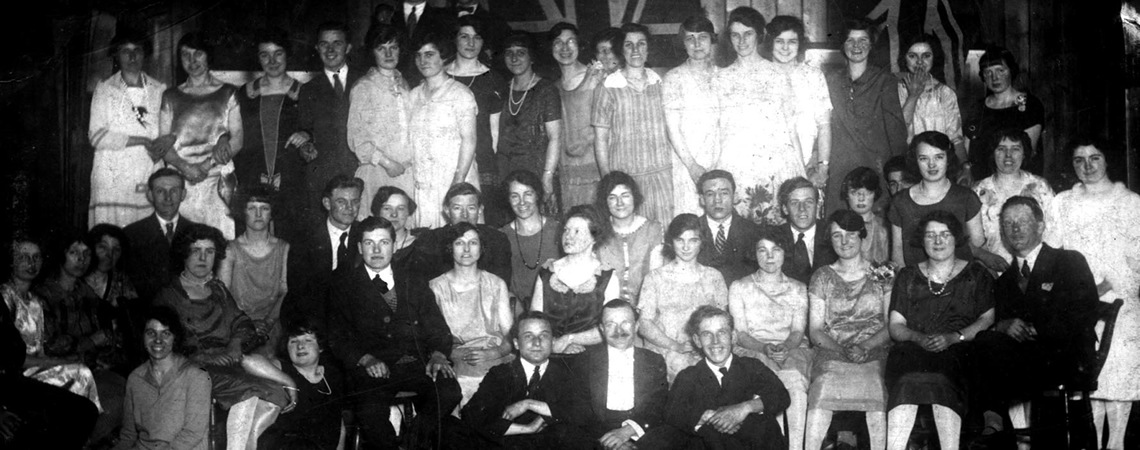
The old Reading Room, the corrugated iron building now used by the Howard Bowmen Archery Club, was once the hub of Lemsford parish life.Above Photographs : 1926 dance in the Reading Room. (May Moore)
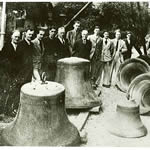 The old Reading Room, the corrugated iron building now used by the Howard Bowmen Archery Club, was once the hub of Lemsford parish life. The Lemsford notes in the Bishops Hatfield parish magazine for the period 1908 to 1919 suggest that during that time it was closed during the summer months and re-opened in the autumn. A note in the issue for November 1919, records that it was to be opened to women and girls on Wednesday evenings. Keith Ladbury, in his History of Lemsford Village, remembers the billiards table, photographs of local football teams on the walls and a row of black calico covered books such as Dickens. There was a small branch of the County Library in the Committee Room where a librarian came twice a week to issue books. The Trustees of the Smiths Charity distributed the 'Brocket Bread' to the poor of Lemsford there. It was the venue for parish celebrations and social events - parish meetings, Mother's Meeting, jumble sales, Friday whist drives, Youth Club, wedding receptions, social evenings and dances. Dances in the mid 20th century were alcohol free but cups of tea and cakes were served in the interval. Ticker Bray the farmer supplied milk free for the teas at these functions but would not dream of coming to anything, he was a very shy man.The Reading Room, which rests on brick supports, is constructed from green painted corrugated iron with tongue-and-grove stained boarding lining the inside walls and a wooden floor. There was a large main hall with a stage at the Church Road end, a kitchen and store room and a small Committee Room. According to Keith Ladbury the windows in about 1916 were of frosted glass.But it has not always sat in the Archery Field. CLICK ON IMAGE TO ENLARGE
The old Reading Room, the corrugated iron building now used by the Howard Bowmen Archery Club, was once the hub of Lemsford parish life. The Lemsford notes in the Bishops Hatfield parish magazine for the period 1908 to 1919 suggest that during that time it was closed during the summer months and re-opened in the autumn. A note in the issue for November 1919, records that it was to be opened to women and girls on Wednesday evenings. Keith Ladbury, in his History of Lemsford Village, remembers the billiards table, photographs of local football teams on the walls and a row of black calico covered books such as Dickens. There was a small branch of the County Library in the Committee Room where a librarian came twice a week to issue books. The Trustees of the Smiths Charity distributed the 'Brocket Bread' to the poor of Lemsford there. It was the venue for parish celebrations and social events - parish meetings, Mother's Meeting, jumble sales, Friday whist drives, Youth Club, wedding receptions, social evenings and dances. Dances in the mid 20th century were alcohol free but cups of tea and cakes were served in the interval. Ticker Bray the farmer supplied milk free for the teas at these functions but would not dream of coming to anything, he was a very shy man.The Reading Room, which rests on brick supports, is constructed from green painted corrugated iron with tongue-and-grove stained boarding lining the inside walls and a wooden floor. There was a large main hall with a stage at the Church Road end, a kitchen and store room and a small Committee Room. According to Keith Ladbury the windows in about 1916 were of frosted glass.But it has not always sat in the Archery Field. CLICK ON IMAGE TO ENLARGE
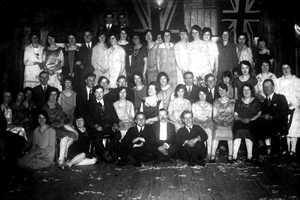
It was first erected in 1895 in the grounds of Bridge House by the Rev. Frederick Coggin
It was first erected in 1895 in the grounds of Bridge House by the Rev. Frederick Coggin, vicar of Lemsford from 1891 to 1905, and run as a private Reading Room. The vicar had rented Bridge House, possibly as a temporary home whilst the vicarage was being enlarged. When he left in 1905 he gave up the tenancy and presented the Reading Room to the parish. As the new tenants of Bridge House wanted it removed Lady Cowper gave permission for it to be re-erected at the entrance to the Roebuck Farm. Unfortunately there was no security of tenure, and on September 29th, 1919, the parish received twelve months notice from Lord Desborough (who had inherited the Panshanger Estate) to remove the Room, as he had sold the farm and the purchaser, Ephraim Wallis, objected to its remaining on his property. Lord Walter Kerr, who had inherited the Brocket Estate after his wife's death, came to the rescue and provided the current site with a 99 year lease at a peppercorn rent of one shilling per year. Three Trustees were responsible for carrying out the terms of the lease. The first trustees were A. J. Sherriff, W. C. Horn and J. B. Horn. And here it stayed serving as the Lemsford Village Hall until the new Village Hall was built in Brocket Road in the early 1970s.
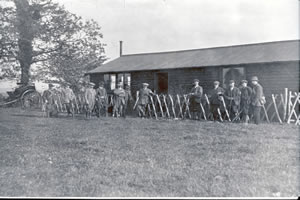
From William Cooper Horn's history of Lemsford Institute Hall.
The original building was erected by the Rev. F. E. and Mrs. Coggin in 1895 in the grounds of Bridge House, which they rented while the former was Vicar of the Parish and run by them privately. On their leaving in 1905 they presented it to the Parish and, as they gave up the tenancy of Bridge House, it had to be moved to a site just inside the farm entrance to Roebuck Farm, which the last Lady Cowper kindly permitted. Unfortunately there was no security of tenure, and on September 29th, 1919, the Parish received twelve months notice from Lord Desborough (who had inherited the Panshanger Estate from Lady Cowper) to remove the Room, as he had sold the farm and the purchaser objected to its remaining on his property. Lord Walter Kerr, who then owned the Brocket Estate, was approached and he kindly consented to grant a 99 years lease of the present site at a peppercorn rent of 1s.0d per year, the responsibility of carrying out the conditions of the lease to be invested in the hands of three trustees. The first trustees appointed were: A. J. Sherriff, W. C. Horn and J. B. Horn
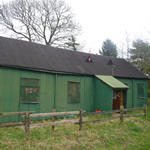
From Keith Ladbury's article on Lemsford Village: From Keith Ladbury's notes on Lemsford
It was during the War, probably in 1916, Lemsford experienced a hurricane which in one night, devastated so many of our loved trees. The wood from the Wheathampstead road down to the river at Flint Bridge completely flattened as by the sweep of a mighty hand. For days after, each morning would see an open lorry come from Newtown where were housed a few German prisoners of war. Guarded by a couple of soldiers they spent their time cutting up the fallen trees and, with a team of horses, hauling the trunks tip onto the long tree wagons of the day. Trees along the Roebuck garden down,with disastrous results to the frosted panes of glass in the windows of the adjoining Reading Room. A minor disaster was the large zinc-covered wooden ball which ornamented the 'lantern' housing the school bell; ripped off and falling with astounding clatter on the slates and playground below, to the consternation of the inmates next door. Just past the Reading Room, already. mentioned, Mr Hale lived and had his Workshop; looking after the carpentry needs of the Village or decorating and painting the School. The Reading Room' with its billiards table, photographs of local football teams and its row of books (Dickens I remember) each covered in black calico.
Excerpts from the Hatfield Parish Magazine re the Reading Room
March 1908Smith's Charity, of which Mr Horn of Handside, is the Treasurer, was given away in the Reading Room, on Thursday, February 20th. The Charity consists of loaves of bread, and is for the people of Lemsford parish, Gosmore and Stanborough. The necessary arrangements, which are by no means light work, were made by Mr William Horn assisted by Mr Savage.
April 1908
On Tuesday March 3rd, Mrs Holdsworth very kindly gave a tea to the Mothers’ Meeting in the reading room. The tea was followed by a really first class concert. The following ladies and gentlemen took part in it: Miss Holdsworth, Miss Mary and Miss Bertha Athill, Miss Burnand, Mrs William Horn, Miss Forbes-Tweedie, and Mr Forbes-Tweedie. Though the weather was very bad practically every member of the Meeting was present. Toward the end of last month, there passed away a prominent member of Lemsford Society, William Alfred Reynolds, at the early age of 27. He was at one time captain of the cricket eleven, and he played with us in nearly every match up to the end of last season. He had been ill for some months, but it was difficult to realize that we should never see him about again. Those of us who play cricket or who are members of the Reading Room will be constantly missing his familiar presence. Our deepest sympathy is extended to those who mourn him as a son and a brother.
October 1908
The Reading Room has been re-opened. And here again we are able to report a very satisfactory beginning. At the opening meeting held on Tuesday September 22nd, when Mr J. B. Horn took the chair, about 30 were present. A vote of thanks to Mr Horn, for the great interest he has taken in the room,and the work he has done for it as Secretary, was proposed by Mr J. Grove and carried unanimously.
October 1910
At a meeting of the Football Club held in the Reading Room on Wednesday, July 27th, Mr Cecil White was elected Captain of the team, and Mr Frederick Reynolds, Vice-Captain. The Committee consists, besides the two named, of our indefatigable Secretary – Mr Welch, Mr Hale, Mr W. Flitney and Mr Wilmhurst. This year Lemsford has joined the Mid-Herts League (Division II) and have also entered for the Herts Junior Cup. The season opened on September 10th at Boreham Wood, when Lemsford lost to that Club by two goals to none after a really good game. On the two following Saturdays, Lemsford lost to Radlett and effected a draw with London Colney. Mr Oliver Reynolds deserves our congratulations. For four successive seasons he has scored the final goal for Lemsford.
November 1911
The Reading Room was opened on Monday, October 23rd, with a Social Evening, quite a new departure but eminently successful. There was a large attendance, and the evening was passed in games and songs. It is hoped that these Social Evenings will be held at intervals, while the Room is open.
February 1913
Mothers' Meeting Tea – On Monday January 18th, Mrs Horn of Handside and Mrs Ward gave a tea to the members of the Mothers' Meeting in the Reading Room. After tea there were various competitions with prizes and games were played. It was altogether a most enjoyable evening.
March 1917
Smith's Charity – on Friday, January 26th, Smith's Charity, or the “Brocket Bread” as it is usually called was distributed in the Reading Room. The pile of loaves looked and smelt most appetising, and the quantity carried away by each recipient must have been a real Godsend to Mothers of large families in these bad times. The bread is provided by a charge left by a one time owner, on the Brocket Estate, to pay the Vicar and Churchwardens of Lemsford 30/- annually, for ever, to distribute in bread to the poor of the parish. As the parish grew, the sum was found too small to supply enough bread to go round, so it is held by the Trustee until a sufficient sum has accumulated to supply each poor parishioner with a certain quantity. Mr W Horn, who must have had considerable trouble in compiling the list, distributed the bread with assistance of Mrs & Miss Moore, Miss Horn and Mrs King.
November 1917, Lemsford News
“Our Day” - Lemsford was fortunate in having fixed Thursday, October 18th, for “Flag Day” in connection with “Our Day,” for the weather was lovely after two wet days. House to house collections were made, and the Flag Sellers were busy all morning in different parts of the village, and at Stanborough. As usual a most generous response was made the sum realised was £14 17s. 0d. An appeal was made for fruit and vegetables, and a splendid collection was brought to the Reading Room, everybody possessing a garden bringing a contribution, and most of the school-children. Lady Mount Stephen bought the vegetables etc., for the benefit of the Red Cross, and sent them to the Welwyn Depot for the Fleet, and the remainder to another Red Cross Sale. The Sale amounted to £7 16s. 2d. bringing the total for the day to £22 13s. 2d. Lady Mount Stephen and Mrs W. Horn, who were responsible for all arrangements, and the collectors are to be congratulated on such a good result. On Sunday, the 21st, the offertories for the day at the Church were given for the same good object, and amounted to over £21.
February 1918
Whist Drive – On Monday, January 14th, a very successful Whist Drive was held in the Reading Room in aid of the County Red Cross. Seventy-five people were present and play was kept until 10.30. Mr Ladbury acted as M.C. Owing to the generosity of friends in giving the prizes, their time, and helping with the light refreshments, expenses were small, and the sum of £5 12s. 6d. was handed in to Lady Mount Stephen. The prize winners were: 1st, Mr W. Adams and Mrs Cliffe; 2nd, Mr Goddard and Miss Munt. Booby prizes to Mr T. Holwell and Miss Oliver; Hidden number prizes, Mrs Kemp and R. Cochrane. After the presentation of the prizes Mr Adams generously put up for auction his prize and it was sold for 7/6, which sum was added to the funds.
April 1918
Whist Drive – Another successful Whist Drive was held in the Reading Room on March 11th, organised as before, by Mrs Moore and a small Committee. A good number were present, and the prizes were won by the following: 1st., Miss C. Clarke and Mr Dear, 2nd, Miss Crystal and Mr Goddard, Booby Mrs Childs and Mr R. Cochrane. Mr Ladbury acted as M.C. Owing to the prizes being given, and the generous gifts of milk and money towards the refreshments, and labour free of charge for the arrangement of the room, the expenses were very little and the proceeds amounted to £5 14s. 9d., which was sent to the Sec. of the Lord Roberts Fund.
November 1918 Obituary of Mrs HornWe shall think of her dear familiar figure on winter afternoons in the Reading Room at the Mothers' Meeting,
February 1919, Lemsford News
Whist Drive – A successful Whist Drive was held in the Reading Room on Monday, the 13th. when between sixty and seventy were present. Mrs W.C. Horn presented the prizes at the end of the evening, the winners being 1st, Mrs F. Scott and Mrs W. Saunders; 2nd, Miss Reeves and Mr F. Goodge; Hidden number, Miss C. Green and Mr Henson; Booby prizes, Miss E. Tritton and Mr F. Spriggs. Mr Ladbury, as usual, was an efficient M.C. The proceeds, after deducting expenses, amounted to £5 10s. 6d. which was sent to St. Dunstan's Hospital for Blinded Sailors and Soldiers. The thanks of those who spent an enjoyable evening are due to the Committee, who organised the Drive, and to all who kindly helped by sending money, milk, etc., towards the refreshments, by lending furniture, or giving their services for the arrangement of the room, thus greatly lessening the expenses.
April 1919, Lemsford News
Whist Drive – A very successful Whist Drive was held in the Reading Room on February 24th, the number present being seventy-two. The prizes were awarded as follows: lady's First, Miss Welch; Lady's Second, share by Mrs E.J. Scott and Miss Ladbury; Hidden Number, Miss Lines; Consolation prize, Miss F. Cottrell. Gentlemen's First, Mr L. Adams; Gentleman's Second, Mr A. Cowland; Hidden Number, Mr A. Pargeter; Consolation Prize, Mr R. Sear. Many thanks are due to the M.C. Mr Ladbury; to Miss Holdsworth, Mrs Cooper Horn, Miss Horn and Mr J. Horn who kindly gave the prizes.; to Mrs A. Sherriff, for the good supply of milk; to Mr Hale, for moving the piano from the Schools, free of charge; and to all the friends who generously lent cards, tables, chairs etc. The proceed so f £4 8s.6d. were given to Mr J. Horn, as trustee for the Reading Room Improvement Fund. After the whist, an enjoyable social evening was kept up until mid-night.
November 1919, Lemsford News
The Reading Room was opened for the winter, on Monday, October 20th. At a General Meeting held on the previous Thursday, with Mr J.B. Horn in the Chair, it was decided to open the Room to women and girls on Wednesday evenings.
THE MANAGEMENT COMMITTEE OF THIS HALL GRATEFULLY ACKNOWLEDGE THE GENEROSITY OF THE ABOVE-MENTIONED ORGANISATION IN DONATING £20 TOWARDS THE COST OF THE IMPROVED LIGHTING - E Runchman Chairman & H.C. ?Harrison Hon. Secretary Autumn 1951
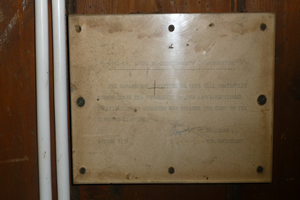
On the right is a Notice on the Reading Room Wall - 1914-18 LOCAL SERVICEMEN'S ORGANISATION. The reading room was first erected in 1895 in the grounds of Bridge House by the Rev. Frederick Coggin, vicar of Lemsford from 1891 to 1905, and run as a private Reading Room. The vicar had rented Bridge House, possibly as a temporary home whilst the vicarage was being enlarged. When he left in 1905 he gave up the tenancy and presented the Reading Room to the parish. As the new tenants of Bridge House wanted it removed Lady Cowper gave permission for it to be re-erected at the entrance to the Roebuck Farm.

